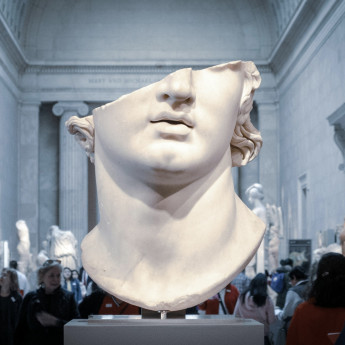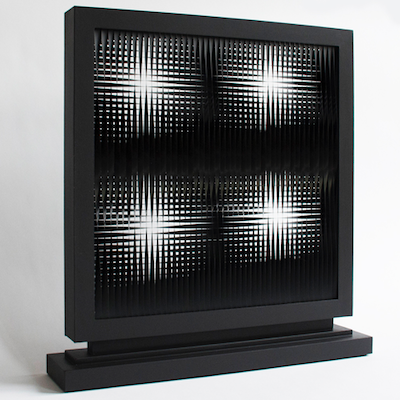
Details
Artist
Styles
Screenprint, wood and painted metal - Signed on the label on the reverse - Published by B.C. de Venezuela. // Rafael Jesus Soto’s Dos Cuadraditos (1972) is a sculptural object that exemplifies the artist’s mastery in kinetic and optical art. The piece features a screen-printed background with vertical black and white stripes, creating a dynamic visual effect that shifts as the viewer changes perspective. Two square elements, one black and one blue, protrude from the surface, playing with spatial perception and movement. Made from wood and painted metal, this work invites the viewer to engage with the illusion of depth and motion, core elements of Soto's practice. Published by B.C. de Venezuela and signed on the reverse, Dos Cuadraditos is a striking representation of Soto's exploration of perception and visual interaction.
Dos Cuadraditos, 1972
form
Medium
Size
27 x 27 X 9 cm
- Inches
- Centimeters
Edition
Price
Details
Artist
Styles
Screenprint, wood and painted metal - Signed on the label on the reverse - Published by B.C. de Venezuela. // Rafael Jesus Soto’s Dos Cuadraditos (1972) is a sculptural object that exemplifies the artist’s mastery in kinetic and optical art. The piece features a screen-printed background with vertical black and white stripes, creating a dynamic visual effect that shifts as the viewer changes perspective. Two square elements, one black and one blue, protrude from the surface, playing with spatial perception and movement. Made from wood and painted metal, this work invites the viewer to engage with the illusion of depth and motion, core elements of Soto's practice. Published by B.C. de Venezuela and signed on the reverse, Dos Cuadraditos is a striking representation of Soto's exploration of perception and visual interaction.
- Recently Added
- Price (low-high )
- Price (high-low )
- Year (low-high )
- Year (high-low )
What is interactive art?
Interactive art is a form of art where the spectator is actively involved by the artist to achieve the artwork's purpose. This involvement can include allowing the visitor to walk around, in, or on the art installation, or even becoming a part of the artwork itself. Works in this category often feature computers, sensors, and interfaces that respond to various inputs such as meteorological changes, heat, motion, or other types of data programmed by the artist.






























